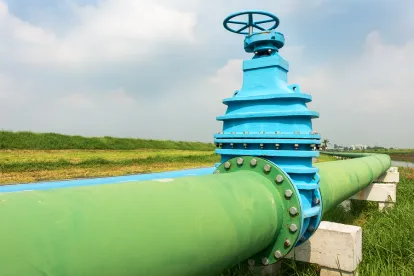Spring is here. That means Wisconsin landowners will soon find water everywhere. Dealing with drainage issues can cause landowners to get creative. In a recent Mississippi case, landowners claimed that they should be entitled to use a utility easement to drain water onto a neighbor’s property.
Mayton v. Oliver, 2017 WL 5907555 (Miss. Ct. App. Nov. 30, 2017), involved four neighbors living along the same road in a platted subdivision. There are two important points to note about the road. First, it was located entirely within an area marked on the plat as a “utility easement.” Second, some of the neighbors used a pipe running under the road to drain water from their lots onto the property of another neighbor, Oliver. The pipe had been in place since 1981 and a former neighbor upgraded it in 2007 without consulting Oliver. In spring 2014, Oliver first noticed the drainage pipe protruding from the road and draining rainwater into a culvert on her property. When heavy rains caused her yard to flood, Oliver blocked the culvert and plugged the pipe with unmixed cement.
In response, three neighbors filed a lawsuit seeking an injunction and damages for Oliver’s interference with the pipe and the culvert, which allegedly caused their properties to flood.
First, the neighbors argued that “drainage” fell under the express terms of the plat’s “utility easement” and Mississippi law required the court interpreting the plat to consider the plaintiffs’ consistent use of the easement for drainage and Oliver’s acquiescence to that practice. Second, they argued that even if drainage fell outside the easement’s scope, their years of use gave them the right to continue using the easement for drainage. The lower court rejected both of these arguments.
The Court of Appeals also affirmed the lower court’s determination that the plaintiffs had failed to show that the pipe had been used openly, notoriously, and in “continuous and uninterrupted possession” for the period required by Mississippi law. The pipe had protruded out from under the road only a short distance and was not easily visible. Furthermore, the pipe had been non-functioning for periods of time.
As this case demonstrates, it is better to sort out easement issues before your property is underwater.






 />i
/>i
